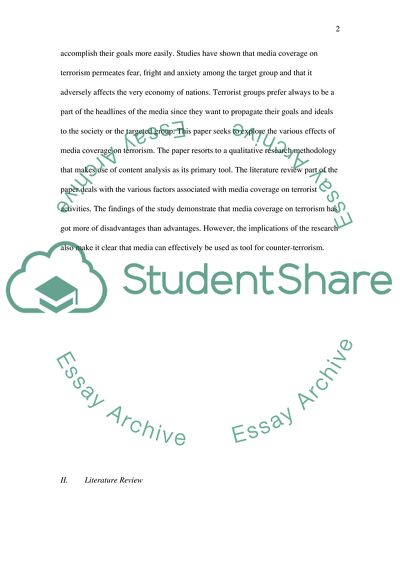Cite this document
(“Media and Terrorism Research Paper Example | Topics and Well Written Essays - 3750 words”, n.d.)
Media and Terrorism Research Paper Example | Topics and Well Written Essays - 3750 words. Retrieved from https://studentshare.org/media/1747373-media-terrorism
Media and Terrorism Research Paper Example | Topics and Well Written Essays - 3750 words. Retrieved from https://studentshare.org/media/1747373-media-terrorism
(Media and Terrorism Research Paper Example | Topics and Well Written Essays - 3750 Words)
Media and Terrorism Research Paper Example | Topics and Well Written Essays - 3750 Words. https://studentshare.org/media/1747373-media-terrorism.
Media and Terrorism Research Paper Example | Topics and Well Written Essays - 3750 Words. https://studentshare.org/media/1747373-media-terrorism.
“Media and Terrorism Research Paper Example | Topics and Well Written Essays - 3750 Words”, n.d. https://studentshare.org/media/1747373-media-terrorism.


